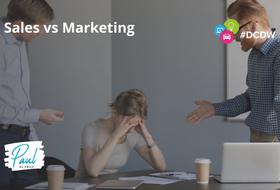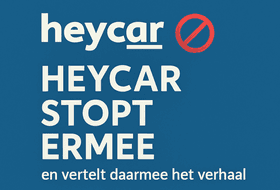
The difference between an active and passive lead!
11 februari 2018, PaulSome OEM’s destroy their sellers through passive leads…

Differences between leads have always been there, and will always remain there. But what has changed is the attention from every layer in the automotive industry for (online) leads and their follow-up. It is often the case that the importers in general are not happy with the dealers’ follow-up of their leads, as a result of which they outsource this to external BDCs.
Peugeot and FCA, among others, work like that. Other brands force follow-up within a certain period of time and if that time limit is not met, they transfer the lead to an external call center (Opel). I can understand all this, after all, if, as an importer, I spend millions on marketing and the opportunities are rolling in, for example as online leads, I expect these opportunities to receive the best possible treatment to achieve a sales opportunity. Just ticking off the lead as being treated is fun, but does not say anything. What did you do with it? I want to know about the number of contacts, appointments and sales. After all, the leads can be free for the dealers, they are not free of obligation!
Passive and active leads
The above information is actually only applicable for the active lead; the lead who has registered himself! I want to have it treated by my best sales representative, the salesman. No excuses in this area. However, what happens is that many importers see leads as a collective term for everything that looks like personal data. This makes them follow up all leads according to the same process with all the consequences. A passive lead is a completely different story than an active lead. A passive lead can be enticed many times less easily to a dialogue and, after that, an appointment, a quote and then a sale. It does not make sense, really, where there is no point in having passive leads followed by your sales people. That’s the same if you let Messi and Ronaldo get involved…
The challenge with passive leads
For example, the passive lead is that customer in the importer’s database that once signed up for an application for model X. Marketing has taken the plan to write that database. This is obviously a good way to get in touch with the customer, but also a way to destroy your salesmen. I continue with this example. Of the 100 leads in the database, there will probably be 50 that actually receive and read a DM in the mailbox, 20 of which will pay some attention to it. Those 100 leads are passed on to your sellers with the order to call.
The first 20 calls provide answers such as ‘leave me alone’, ‘no interest’ and ‘not in the market’. The seller’s reaction can be guessed. In any case, he will never put more time and energy into those other 80 leads. Then the importer pumps five active leads through it and they are also not picked up anymore, because the seller is just done with it… In other words, we call out the misery over ourselves. How it should be done? All those leads can perfectly be called by professional telemarketers who do not get annoyed if someone says no or does not answer. Moreover, you do not make 300 call attempts in the showroom, to call 100 leads and then have a 60% conversation. After the first 20 it is done… These leads do not belong to the seller, the seller must have good leads that he can score with.
This also applies to the e-DMs that are sent and that are triggered when the customer clicks on something. These are not quotation requests, but leads that are slightly warmer than average. You cannot call that lead because of a request for a quote, but much more from the information requirement. The conversion on these leads depends entirely on your process and the quality of your database. You can expect that the conversion is on average 5%, but it will not get higher, because the first initiatives to get in touch don’t come from the customer.
Active leads
Active leads are the holy grail. These leads have signed up and are going to buy in the coming months. There is therefore no excuse as a dealer or as a salesperson for not handling these leads properly. A conversion of more than 13% should be the norm and not the goal. Active online leads are part of the job, just like telephone leads and physical leads. The only thing that sales managers need to do is to keep sellers responsible. You have had 100 active online leads, then you expect at least 13 orders, 22 people who came in, 36 appointments and 60 people with whom they were in contact. That is 100% the responsibility of the seller.
Importers should actually make a difference between active and passive leads. Active leads, such as test drive requests, brochure requests (high conversion, long lead time) and request for quotation compared to database mining leads. The active lead is the full 100% responsibility of the seller, the other lead has to go through a different process, via an (external) BDC to an appointment, after which the seller takes over the now active lead… Only then you can expect and demand a higher conversion.
About Paul de Vries
Paul de Vries became a Key Automotive Spokesperson at eBay (Marktplaats) after selling Nieuweautokopen.nl to eBay back in 2015. Paul is the founder and CEO of the #DCDW Academy and the presenter of the #DCDW Podcast. He is also a by dealers and importers frequently asked speaker in the online automotive industry. Paul is the winner of the prestigious Lighthouse Award 2016 in the U.S.! `Lead the Way op de digitale snelweg’ is Paul’s new book, which can be used as a guide in the online automotive industry. More information is available at: DCDW.nl.




